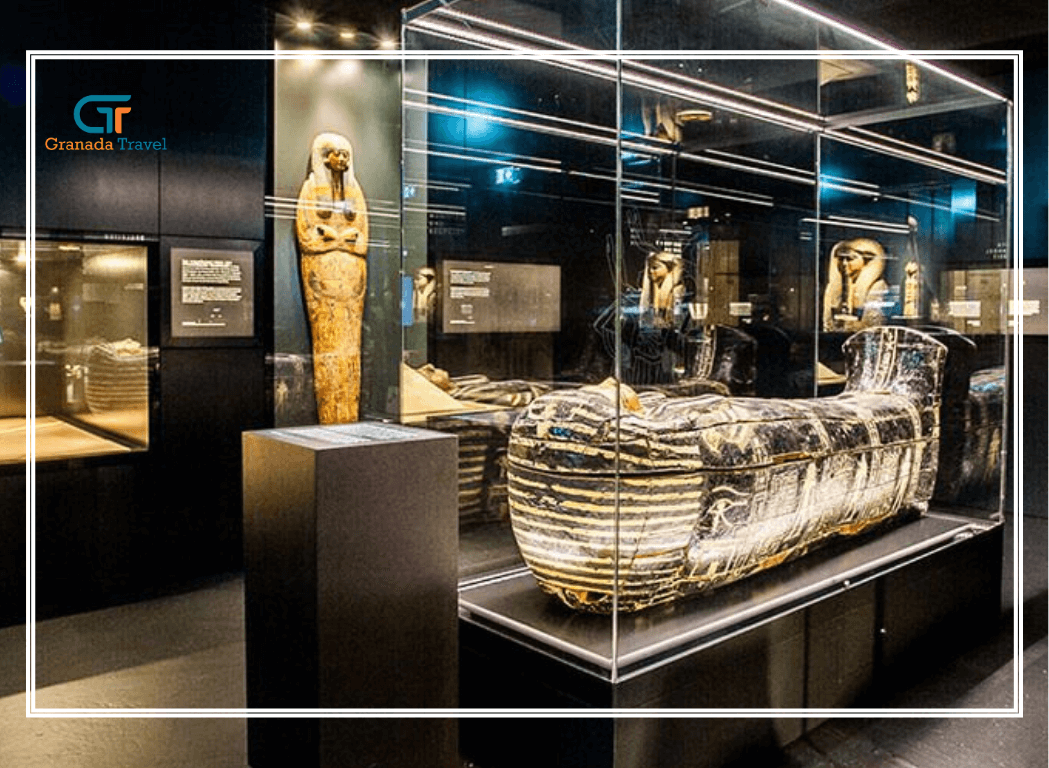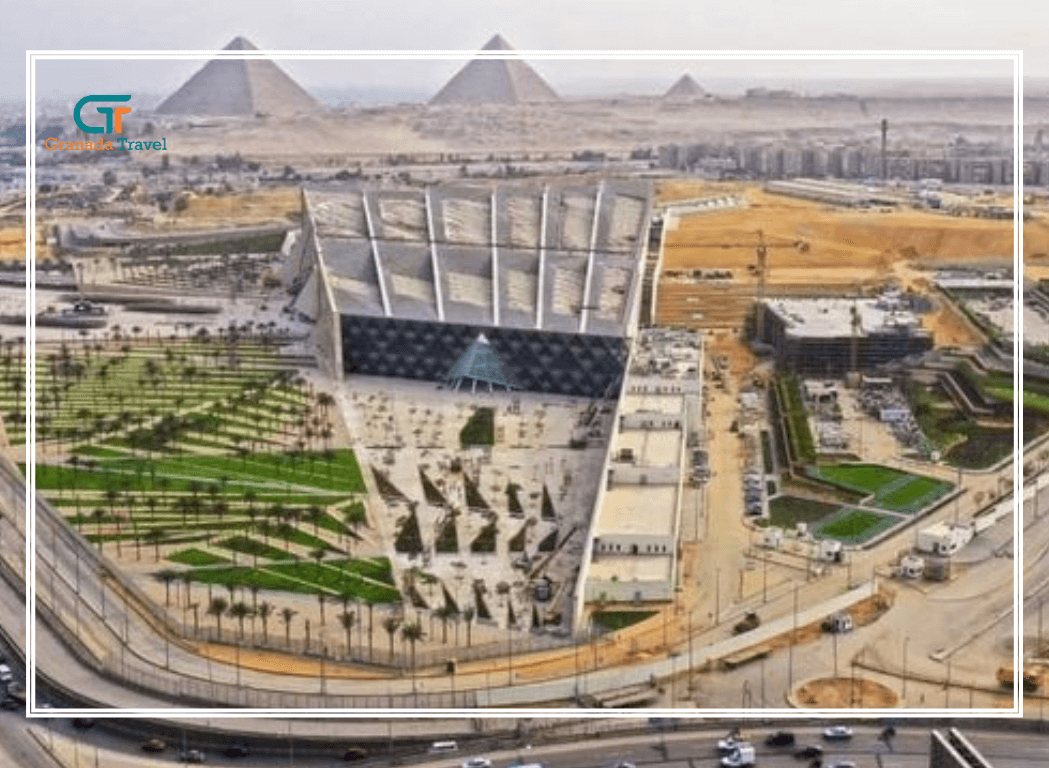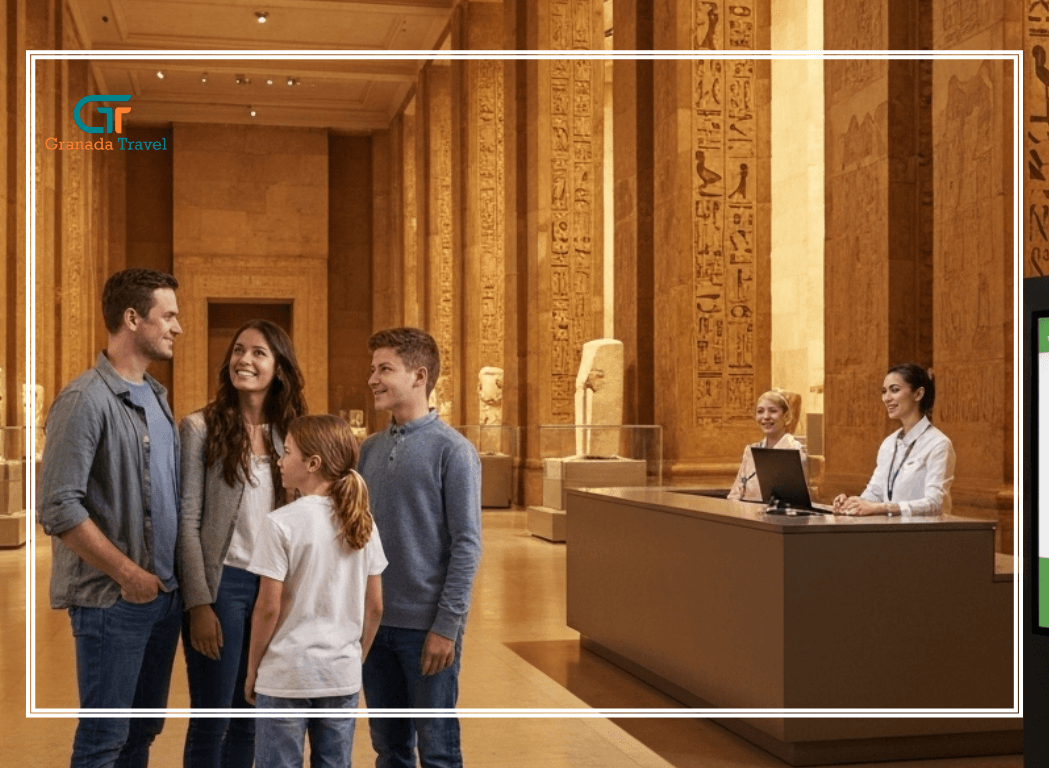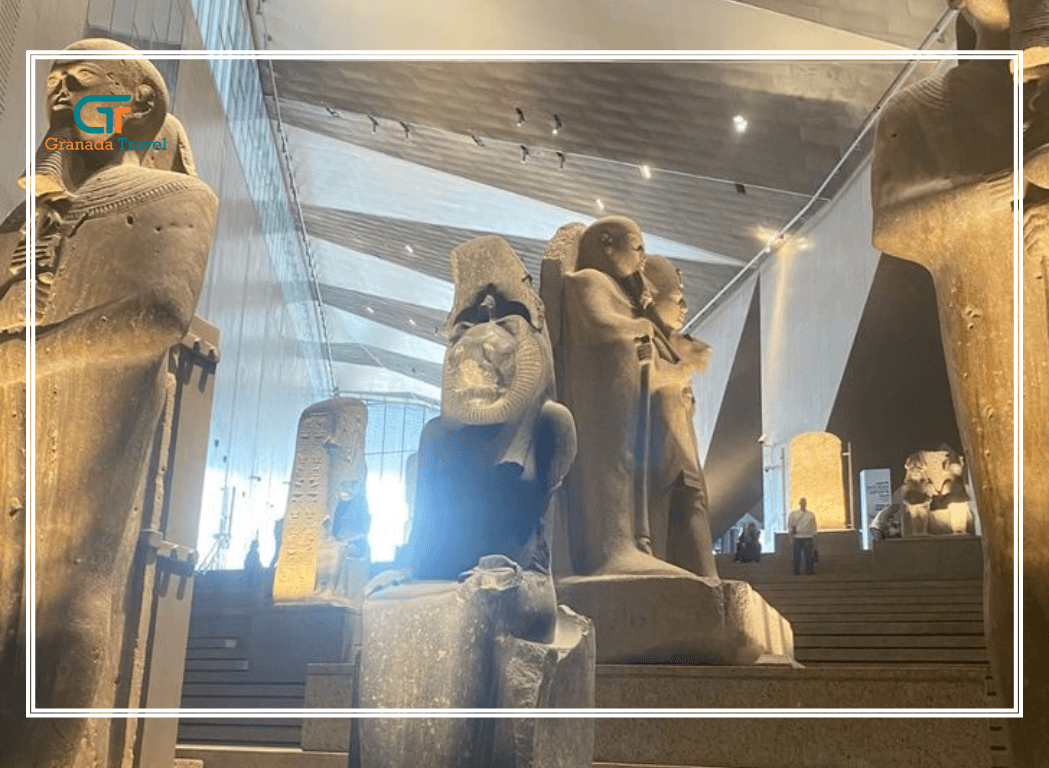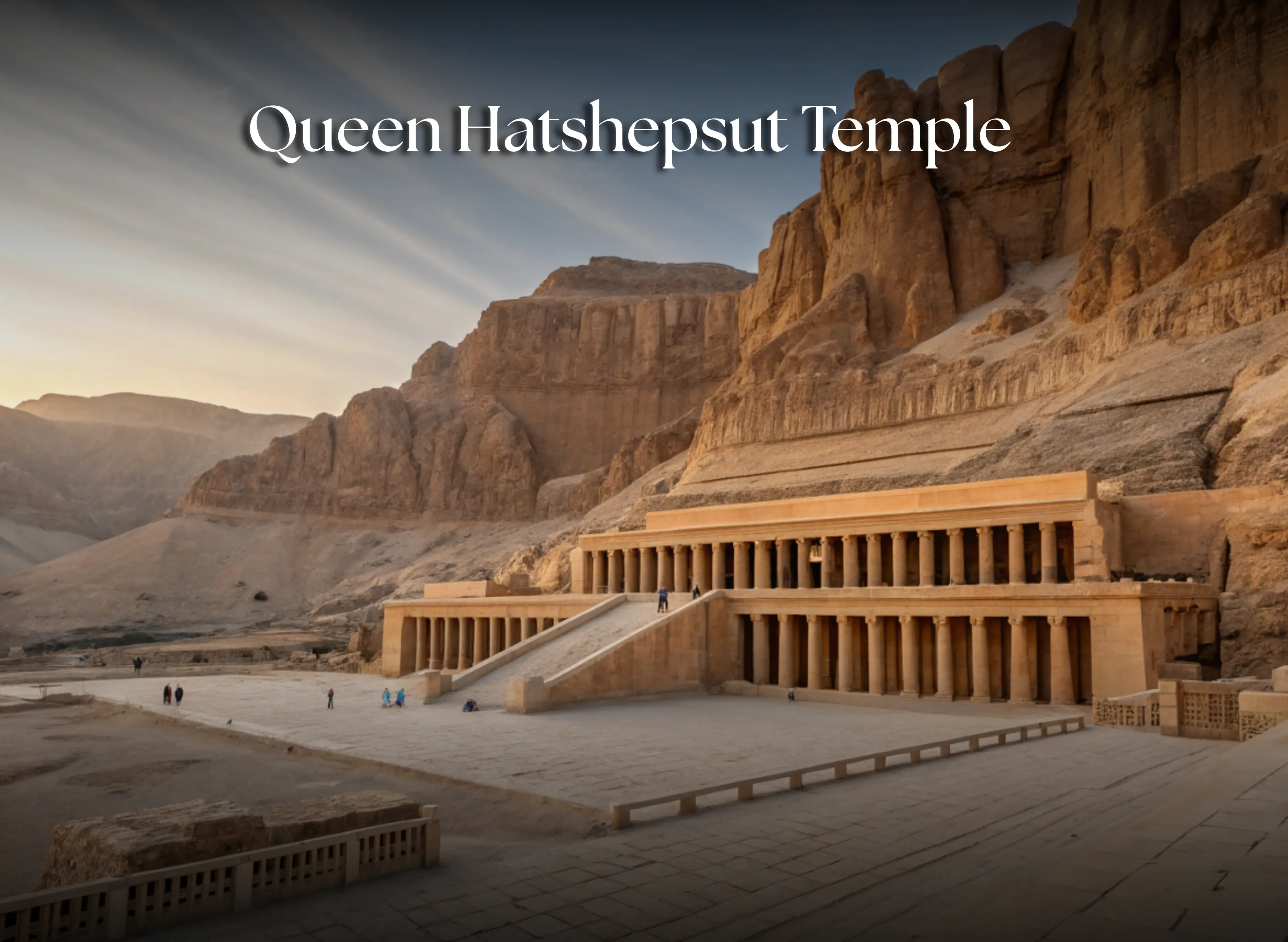
Stepping Back in Time: Unveiling the Majesty of Queen Hatshepsut Temple
Nestled against the dramatic cliffs of Deir el-Bahari on Luxor's West Bank, the queen hatshepsut temple stands as a breathtaking testament to the ambition and power of one of Egypt's most remarkable pharaohs. More than just a monument, this mortuary temple of queen hatshepsut offers a profound glimpse into the reign of a female ruler who dared to break tradition and leave an indelible mark on Egyptian history.
For anyone planning a trip to luxor egypt, a visit to the queen hatshepsut temple luxor egypt is an absolute must. Its unique architectural design, unlike the traditional pyramid complexes, seamlessly blends with the natural landscape, creating a visual spectacle that has captivated travelers for centuries. This blog post will delve into the wonders of this iconic site, exploring its history, architecture, and the fascinating story of the woman who commissioned its construction.
A Temple Fit for a Pharaoh: The Vision of Hatshepsut
Hatshepsut, meaning "Foremost of Noble Ladies," rose to power during the 18th Dynasty, initially as regent for her stepson Thutmose III. However, she soon asserted herself as pharaoh, ruling for over two decades and ushering in a period of peace and prosperity. Her decision to build such a grand funerary temple of queen hatshepsut was not only a testament to her royal status but also a powerful statement of her legitimacy as a female ruler in a traditionally male-dominated society.
Senemut, her trusted advisor and architect, is credited with the ingenious design of the temple. Instead of a towering pyramid, he conceived of a series of colonnaded terraces carved directly into the sheer limestone cliffs. This innovative approach not only created a visually stunning structure but also symbolized Hatshepsut's connection to the divine and the natural world.
Ascending to Divinity: The Architectural Marvel
The queen hatshepsut temple is comprised of three main terraces, each rising majestically above the other and connected by ramps. As you approach the temple, the sheer scale of the undertaking becomes apparent. The harmonious integration of the architecture with the natural backdrop is truly awe-inspiring.
The Lower Terrace: Upon arrival, visitors are greeted by what was once a lush garden, leading to a long ramp that ascends to the second terrace. While much of the original landscaping has disappeared over time, the imposing colonnades that flank this level still stand as a powerful introduction to the temple's grandeur. These colonnades feature depictions of various scenes, setting the stage for the narratives that unfold on the higher levels.
The Middle Terrace: Ascending the first ramp brings you to the middle terrace, home to some of the temple's most significant features.
- The Punt Colonnade: Located on the left (south) side, this colonnade vividly depicts Hatshepsut's famous expedition to the Land of Punt, a region believed to be on the Horn of Africa. The detailed carvings showcase the ships, the exotic flora and fauna brought back, and the welcoming people of Punt. These scenes provide invaluable insights into ancient Egyptian trade and exploration.
- The Birth Colonnade: Situated on the right (north) side, this colonnade narrates the divine birth of Hatshepsut. The intricate reliefs depict the god Amun visiting her mother, Ahmes, and the subsequent miraculous conception, reinforcing Hatshepsut's claim to pharaonic legitimacy.
The Upper Terrace: The final ascent leads to the upper terrace, which houses the main sanctuary.
- The Sanctuary of Amun: This inner sanctum, carved deep into the rock face, was dedicated to the state god Amun. It would have been the focus of religious rituals and offerings.
- The Solar Court: An open courtyard on the upper terrace, likely used for sun worship.
Exploring inside queen hatshepsut temple reveals a wealth of intricate carvings, hieroglyphs, and architectural details that speak volumes about the religious beliefs, political aspirations, and artistic prowess of the time. The play of light and shadow across the colonnades and the sheer scale of the structure leave a lasting impression.
Unearthing History: Excavation and Preservation
The mortuary temple of queen hatshepsut has a long and fascinating history of rediscovery and preservation. In ancient times, after Hatshepsut's death and the subsequent attempts to erase her memory, the temple suffered some damage. Later, it was even used as a Coptic monastery.
Modern excavation efforts, particularly those led by the Egyptian Exploration Fund in the early 20th century, have been crucial in revealing the temple's original splendor. Ongoing conservation work continues to ensure that this remarkable monument endures for future generations.
Fascinating Facts: Peeking Behind the Scenes
There are many intriguing queen hatshepsut temple facts that add to its allure:
- The temple's design is considered a masterpiece of ancient Egyptian architecture, often compared to classical Greek architecture due to its harmonious proportions.
- The expedition to Punt depicted in the Punt Colonnade is a significant historical record, providing valuable information about trade and cultural exchange in the ancient world.
- The deliberate defacement of Hatshepsut's images and inscriptions by her successor, Thutmose III, highlights the complex power dynamics of the time. While initially interpreted as outright hatred, some scholars now suggest it was a way to solidify the male lineage of pharaohs.
- The temple was also dedicated to Hathor, the goddess of love, beauty, and motherhood, and Anubis, the god of the afterlife. Chapels dedicated to these deities can be found within the complex.
Beyond Hatshepsut's Temple: Exploring the West Bank
The queen hatshepsut temple luxor egypt is just one of the many incredible sites to explore on Luxor's west bank luxor. A short distance away lies the famed valley of the kings, the final resting place of many New Kingdom pharaohs, including Tutankhamun.
Venturing further, you can discover the valley of the queens, the burial site for royal wives and children. The vibrant and well-preserved tombs here offer a different perspective on ancient Egyptian funerary practices.
For those interested in the nobility, the valley of the nobles contains the elaborate tombs of high-ranking officials and courtiers, adorned with beautiful scenes of daily life.
Across the Nile, on the east bank, the magnificent karnak temple, the largest religious structure ever built, stands as a testament to the enduring power of the pharaohs and their devotion to the gods.
A Journey Through Time
A visit to the queen hatshepsut temple is more than just sightseeing; it's a journey back in time to an era of powerful rulers, intricate religious beliefs, and remarkable artistic achievements. Standing within its colonnades, you can almost hear the echoes of ancient rituals and the footsteps of those who walked these terraces thousands of years ago.
The unique architecture, the captivating reliefs, and the compelling story of Queen Hatshepsut herself make this temple an unforgettable experience. So, when you find yourself in luxor egypt, be sure to dedicate ample time to explore the majesty of the mortuary temple of queen hatshepsut, a true gem of the ancient world.
Have you visited Queen Hatshepsut's Temple? Share your experiences in the comments below!
[cta-actions]

